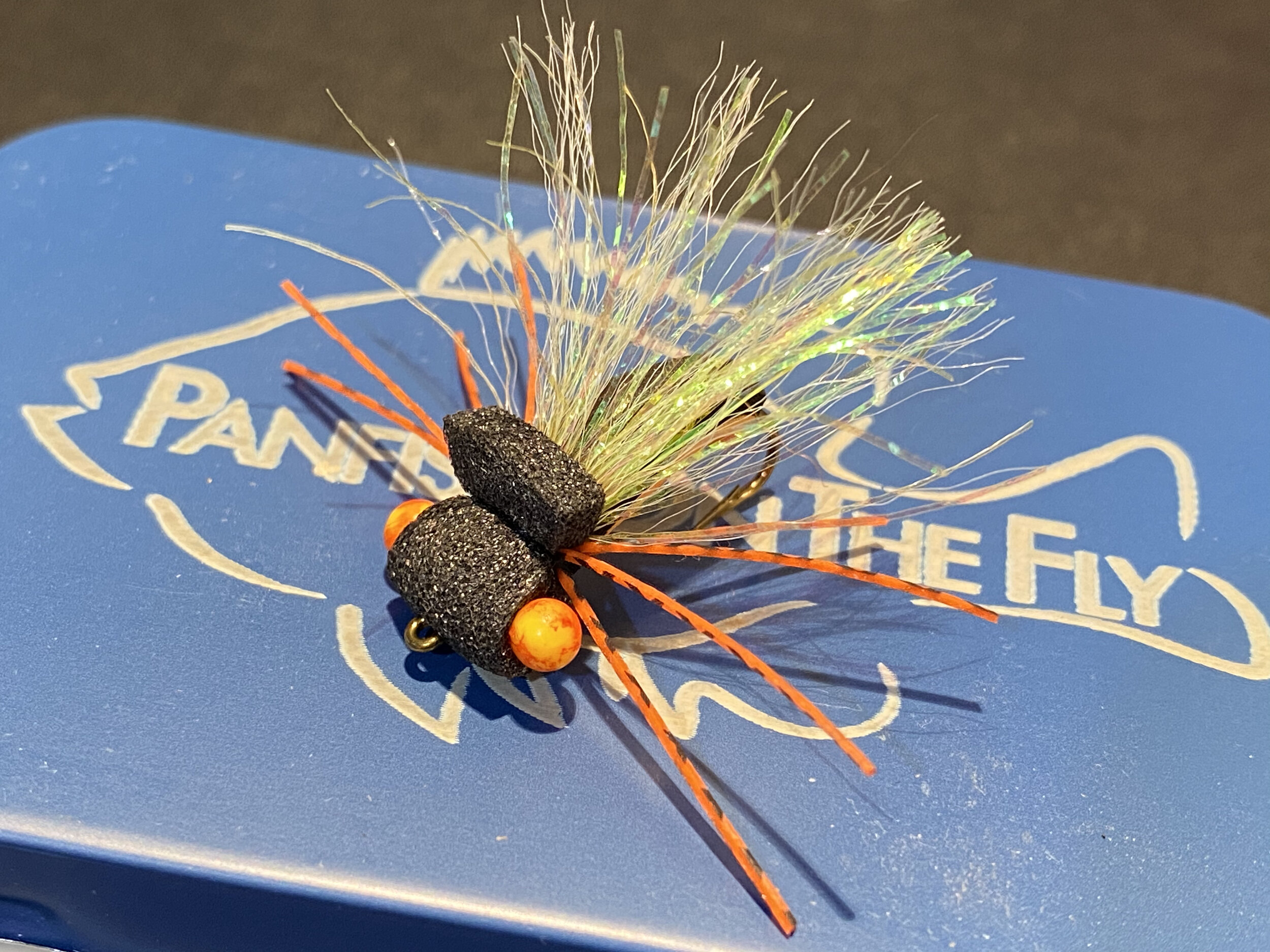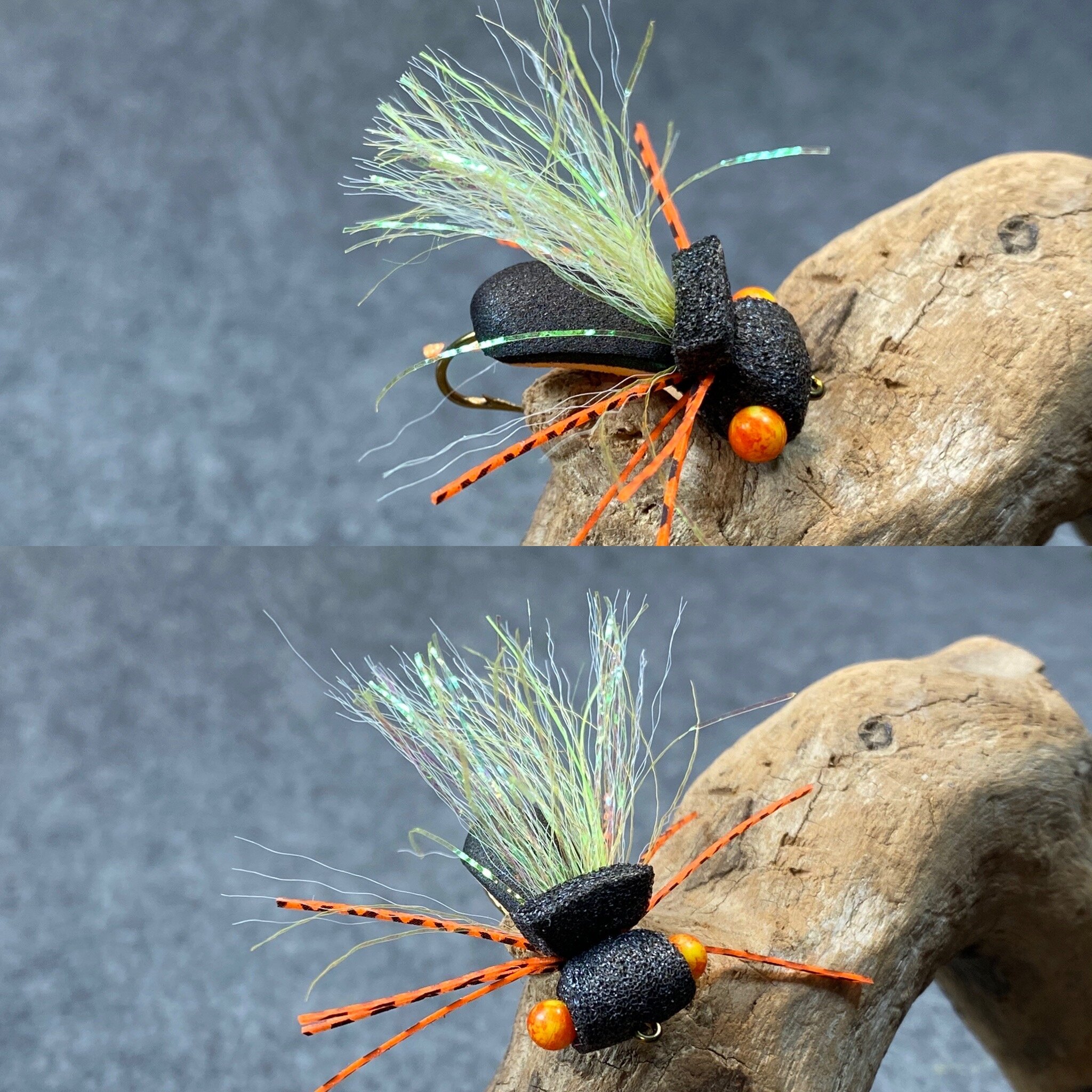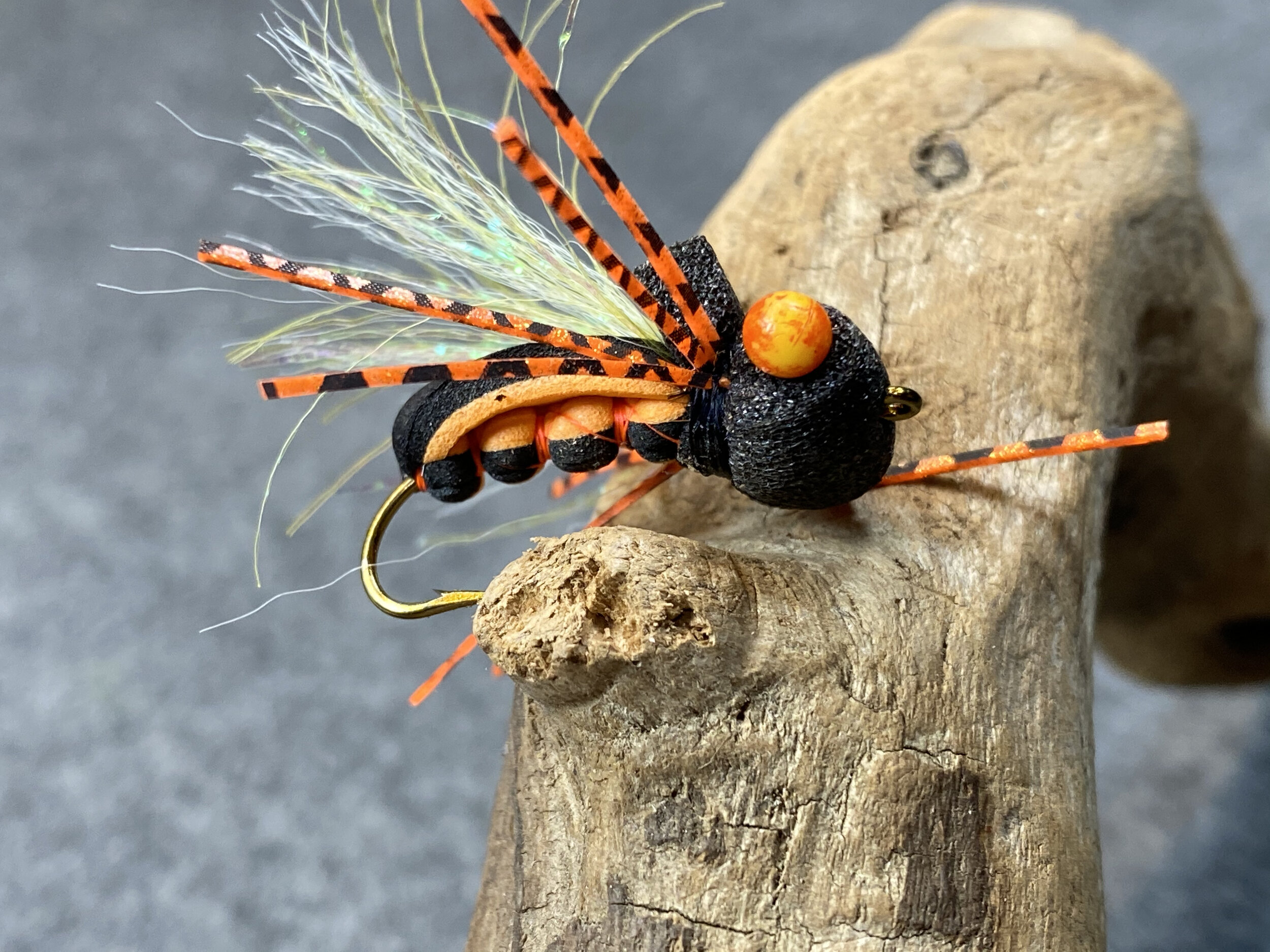If you are a fly fisher, the Brood X Cicada should have crossed your radar by now. The Brood X bug is one of the largest and most widely distributed groups of periodical cicadas. They are scheduled to emerge this spring after spending 17 years underground. Living 17 years underground makes them the longest living insect on earth, though much of that time is spent in a form of suspended animation. I recently read a statistic that there could be upwards of 1.5 million cicadas emerging per acre in some areas putting brood population in the trillions! This massive emergence provides a feast for creatures large and small (including fish) and one hell of a mess for homeowners to clean up if they are unfortunate enough to find a concentration of these insects living under their property. Despite the feeding frenzy that is about to occur, the sheer number of insects that are about to invade our world will ensure enough of them successfully breed to repeat the cycle 17 years from now.
The Brood X Cicada is large insect that will create a feeding frenzy with they emerge in numbers that may reach into the trillions! (photo credit Wikipedia)
Once these giant bugs begin to emerge, we can expect them to be around for 4-6 weeks. Any trout angler will tell you when many insects suddenly appear in the form of a hatch; it can bring on some great fishing. If that insect finding its way onto the water's surface is two inches long, it can be some exciting fishing indeed. That being the case, if you live in one of the regions listed below, you should have a cicada pattern or two in your box.
Areas highlighted in orange are where you can expect the a strong emergence of the Brood X Cicada. (Source: US Forest Service)
Delaware
Georgia
Illinois
Indiana
Kentucky
Maryland
Michigan
New Jersey
New York
North Carolina
Ohio
Pennsylvania
Tennessee
Virginia
West Virginia
The design I have settled on to imitate the Brood X Cicada is a variation of Jack Harford’s House Fly.
I have experimented with several different patterns to try and imitate this big bug, and I have settled on an easy-to-tie design to fill most of the spots in my cicada box. Some weeks back, I featured Jack Harford's House Fly in a Fly tying Friday post. This chunky foam fly seemed like an excellent platform to try and build a brood x cicada. The two-layered foam pattern would allow me to highlight the black and orange colors of the Brood X Cicada, and the multiple layers of foam would give the fly a good splat when it lands on the surface of the water. This splat is an essential feature of the fly when imitating an insect as large as a cicada.
The tying technique used to create this fly allows for the black and orange to be clearly displayed.
Rather than repeat the tying steps here, I will refer you back to the original blog post to find step-by-step instructions for tying this pattern, or you can check out the video below.
To tie my cicada version of the house fly, I made a few changes to the original pattern. The first change was the hook; as this fly is tied to imitate an insect that can reach two inches in length, a larger hook had to be used. I chose a size 12 bass bug hook (bass bug hooks don't follow the standard sizing criteria). The larger hook was the perfect platform to build this big bug. I have tied some cicada on even larger hooks that I intend to use solely for bass, but the #12 bass bug hook is small enough to hook large bluegill yet large enough to effectively imitate the insect, and catching monster panfish on these big bugs is a goal I have set for myself this year. I also added eyes to this pattern as the bright orange eyes of the natural insect are such a prominent feature. Their large wings are also an important feature. While the spent insect is likely to lay on the water with its wings spread out to the side, casting a fly with a two-inch wing sticking out on each side is likely to be problematic on a 4wt fly rod. I opted for a swept-back wing profile with a lot of sparkle to imitate the light reflected by the insects' large transparent wings.
Pattern Recipe:
Hook: Size 12 Bass Bug Hook
Thread: 6/0 Semperfli Classic Waxed Thread (Fl. Orange and Black)
Body: Black and orange 2mm Foam
Legs: Black and orange silicon or round rubber legs
Wing: Semperfli Semperflash or other suitable flashy material
Eyes: Orange ball headpins cut to length, inserted, and glued into the foam head





